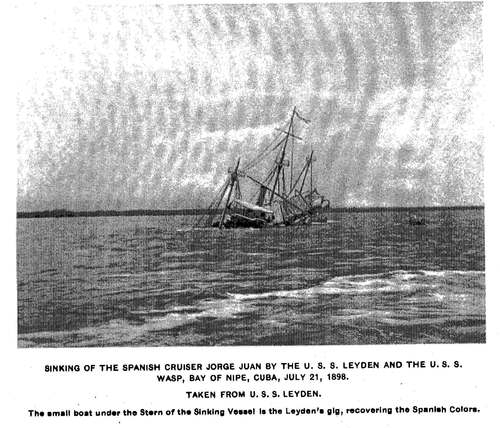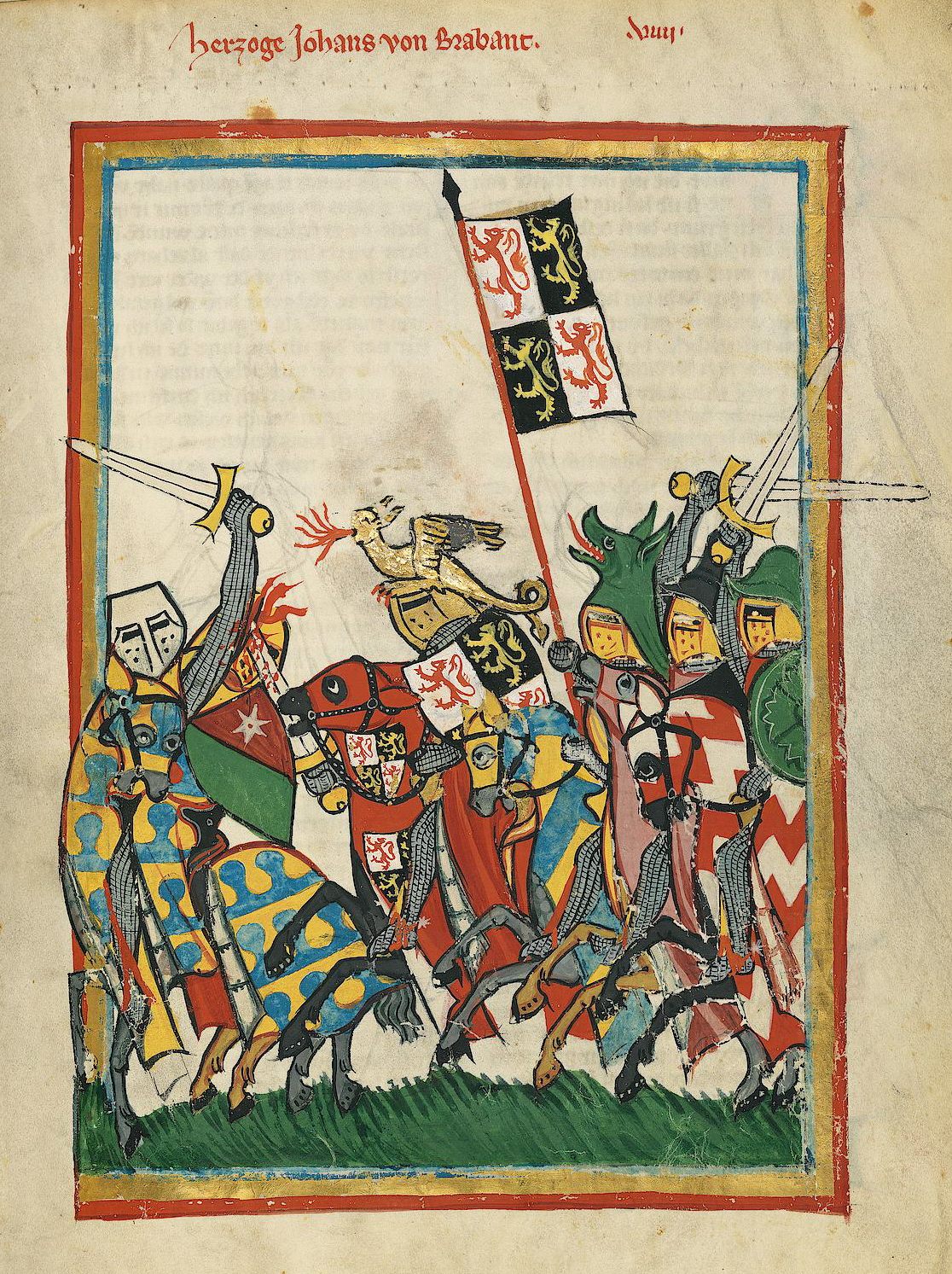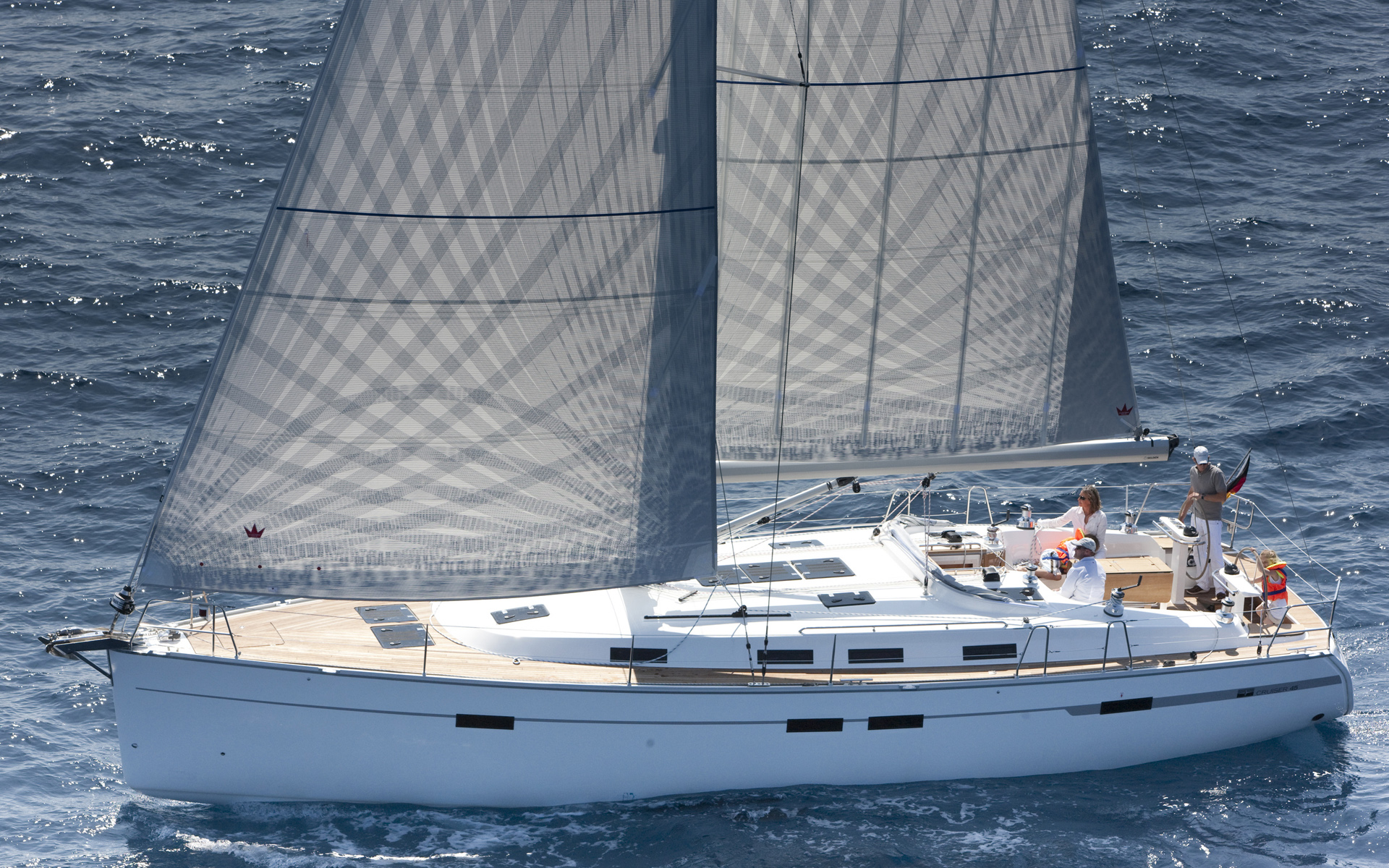|
Battle Of Nipe Bay
The Battle of Nipe Bay on July 21, 1898, was an engagement of the Spanish–American War. The battle was fought in Nipe Bay, Cuba, by four United States Navy warships against the Spanish sloop-of-war ''Jorge Juan'' and three gunboats which were supported by forts guarding the harbor. Battle Nipe Bay had been designated as a rendezvous point for American naval forces delegated to attack Puerto Rico. Upon finding the harbor still occupied by Spanish forces, the American squadron, consisting of the gunboats USS ''Annapolis'' and USS ''Topeka'', the armed tug USS ''Leyden'' and the armed yacht , maneuvered through a minefield to engage the Spanish forces. ''Jorge Juan'' opened fire on ''Wasp'' and ''Leyden'', but they quickly sank her with help from ''Annapolis''. While the other three ships were engaging ''Jorge Juan'', ''Topeka'' silenced the harbor forts and fired on other Spanish works in the harbor. Aftermath Seeing the hopelessness of the situation, the Spanish sailed ... [...More Info...] [...Related Items...] OR: [Wikipedia] [Google] [Baidu] |
Spanish–American War
, partof = the Philippine Revolution, the decolonization of the Americas, and the Cuban War of Independence , image = Collage infobox for Spanish-American War.jpg , image_size = 300px , caption = (clockwise from top left) , date = April 21 – August 13, 1898() , place = , casus = , result = American victory *Treaty of Paris (1898), Treaty of Paris of 1898 *Founding of the First Philippine Republic and beginning of the Philippine–American War * German–Spanish Treaty (1899), Spain sells to Germany the last colonies in the Pacific in 1899 and end of the Spanish Empire in Spanish colonization of the Americas, America and Asia. , territory = Spain relinquishes sovereignty over Cuba; cedes Puerto Rico, Guam and the Philippine Islands to the United States. $20 million paid to Spain by the United States for infrastructure owned by Spain. , combatant1 = United State ... [...More Info...] [...Related Items...] OR: [Wikipedia] [Google] [Baidu] |
USS Topeka (PG-35)
USS ''Topeka'' (PG-35) was a gunboat of the United States Navy. The ship was built in 1881 as the Socrates-class steamer (and prospectively, the Lima-Class cruiser Callao) ''Diogenes'' by the Howaldtswerke at Kiel, Germany. Acquired by the Navy from the Thames Iron Works, London, England, on 2 April 1898, she was renamed ''Topeka'', and placed in commission the same day. Service history Spanish–American War, 1898–1899 ''Topeka'' cleared Falmouth, England, on 19 April 1898 and arrived at Tompkinsville, New York, on 1 May 1898. The following day, she moved to the New York Navy Yard to begin a two-month overhaul during which she received her armament and generally prepared for duty on the Cuban blockade. The gunboat departed New York on 30 June 1898 and, after a five-day stop at Key West, Florida, joined the blockading forces off Havana on 11 July 1898. That same day, she was assigned station off Nipe Bay, located on the northeastern shore of Cuba almost directly oppos ... [...More Info...] [...Related Items...] OR: [Wikipedia] [Google] [Baidu] |
1898 In Cuba
Events January–March * January 1 – New York City annexes land from surrounding counties, creating the City of Greater New York as the world's second largest. The city is geographically divided into five boroughs: Manhattan, Brooklyn, Queens, The Bronx and Staten Island. * January 13 – Novelist Émile Zola's open letter to the President of the French Republic on the Dreyfus affair, ''J'Accuse…!'', is published on the front page of the Paris daily newspaper ''L'Aurore'', accusing the government of wrongfully imprisoning Alfred Dreyfus and of antisemitism. * February 12 – The automobile belonging to Henry Lindfield of Brighton rolls out of control down a hill in Purley, London, England, and hits a tree; thus he becomes the world's first fatality from an automobile accident on a public highway. * February 15 – Spanish–American War: The USS ''Maine'' explodes and sinks in Havana Harbor, Cuba, for reasons never fully established, killing 2 ... [...More Info...] [...Related Items...] OR: [Wikipedia] [Google] [Baidu] |
Mayarí
Mayarí is a municipality and town in the Holguín Province of Cuba. History The origins of the city date back to 1757 in Spanish Cuba, when the first farms were established here by immigrant colonists. On 19 January 1879 the city became the seat of Mayarí Municipality. Geography The municipality is divided into the barrios and hamlets of Barajagua, Cabonico, Cajimaya, Chavaleta Norte, Chavaleta Sur, Guayabo, Juan Vicente, Mateo Sánchez, Punta de Tabaco, Río Frío, Sae-Tía, San Gregario Norte, San Gregorio Sur and Santa Isabel. Birán, the birthplace of Fidel and Raúl Castro, was part of Mayarí until the 1976 reform, when it became part of the neighboring Cueto municipality. Among other barrios or neighborhoods in this municipality are: Felton (on Cajimaya Bay, once the seaport for the Bethlehem Cuba Iron Mines Company -Bethlehem Steel-), Guaro, Guatemala (on Nipe Bay, previously named Preston and a central sugar mill operated by the United Fruit Company), Nicaro-Levi ... [...More Info...] [...Related Items...] OR: [Wikipedia] [Google] [Baidu] |
Battles Involving Cuba
A battle is an occurrence of combat in warfare between opposing military units of any number or size. A war War is an intense armed conflict between states, governments, societies, or paramilitary groups such as mercenaries, insurgents, and militias. It is generally characterized by extreme violence, destruction, and mortality, using regular o ... usually consists of multiple battles. In general, a battle is a military engagement that is well defined in duration, area, and force commitment. An engagement with only limited commitment between the forces and without decisive results is sometimes called a skirmish. The word "battle" can also be used infrequently to refer to an entire operational campaign, although this usage greatly diverges from its conventional or customary meaning. Generally, the word "battle" is used for such campaigns if referring to a protracted combat encounter in which either one or both of the combatants had the same methods, resources, and st ... [...More Info...] [...Related Items...] OR: [Wikipedia] [Google] [Baidu] |
Naval Battles Of The Spanish–American War
A navy, naval force, or maritime force is the branch of a nation's armed forces principally designated for naval and amphibious warfare; namely, lake-borne, riverine, littoral, or ocean-borne combat operations and related functions. It includes anything conducted by surface ships, amphibious ships, submarines, and seaborne aviation, as well as ancillary support, communications, training, and other fields. The strategic offensive role of a navy is projection of force into areas beyond a country's shores (for example, to protect sea-lanes, deter or confront piracy, ferry troops, or attack other navies, ports, or shore installations). The strategic defensive purpose of a navy is to frustrate seaborne projection-of-force by enemies. The strategic task of the navy also may incorporate nuclear deterrence by use of submarine-launched ballistic missiles. Naval operations can be broadly divided between riverine and littoral applications (brown-water navy), open-ocean applicati ... [...More Info...] [...Related Items...] OR: [Wikipedia] [Google] [Baidu] |
Spanish Navy
The Spanish Navy or officially, the Armada, is the maritime branch of the Spanish Armed Forces and one of the oldest active naval forces in the world. The Spanish Navy was responsible for a number of major historic achievements in navigation, the most famous being the discovery of America and the first global circumnavigation by Elcano. For several centuries, it played a crucial logistical role in the expansion and consolidation of the Spanish Empire, and defended a vast trade network across the Atlantic Ocean between the Americas and Europe, and the Manila Galleon across the Pacific Ocean between the Philippines and the Americas. The Spanish Navy was the most powerful maritime force in the world from the late 15th century to the early 18th century. In the early 19th century, with the loss of most of its empire, Spain transitioned to a smaller fleet but maintained a major shipbuilding industry which produced important technical innovations. The Spanish Navy built and oper ... [...More Info...] [...Related Items...] OR: [Wikipedia] [Google] [Baidu] |
United States Navy Trophy Flag Collection
United may refer to: Places * United, Pennsylvania, an unincorporated community * United, West Virginia, an unincorporated community Arts and entertainment Films * ''United'' (2003 film), a Norwegian film * ''United'' (2011 film), a BBC Two film Literature * ''United!'' (novel), a 1973 children's novel by Michael Hardcastle Music * United (band), Japanese thrash metal band formed in 1981 Albums * ''United'' (Commodores album), 1986 * ''United'' (Dream Evil album), 2006 * ''United'' (Marvin Gaye and Tammi Terrell album), 1967 * ''United'' (Marian Gold album), 1996 * ''United'' (Phoenix album), 2000 * ''United'' (Woody Shaw album), 1981 Songs * "United" (Judas Priest song), 1980 * "United" (Prince Ital Joe and Marky Mark song), 1994 * "United" (Robbie Williams song), 2000 * "United", a song by Danish duo Nik & Jay featuring Lisa Rowe Television * ''United'' (TV series), a 1990 BBC Two documentary series * ''United!'', a soap opera that aired on BBC One from 1965-19 ... [...More Info...] [...Related Items...] OR: [Wikipedia] [Google] [Baidu] |
Battle-flag
A war flag, also known as a military flag, battle flag, or standard, is a variant of a national flag for use by a country's military forces when on land. The nautical equivalent is a naval ensign. Under the strictest sense of the term, few countries today currently have proper war flags, most preferring to use instead their state flag or standard national flag for this purpose. __TOC__ History Field signs were used in early warfare at least since the Bronze Age. The word ''standard'' itself is from an Old Frankish term for a field sign (not necessarily a flag). The use of flags as field signs apparently emerges in Asia, during the Iron Age, possibly in either China or India.flag. (2008). Encyclopædia Britannica. Chicago: Encyclopædia Britannica. in Achaemenid Persia, each army division had its own standard, and "all officers had banners over their tents".E. Pottier, ''Douris'', London, 1909, p. 105 fig. 20, Plate XXV.b Early field signs that include, but are not limited to ... [...More Info...] [...Related Items...] OR: [Wikipedia] [Google] [Baidu] |
Naval Mine
A naval mine is a self-contained explosive device placed in water to damage or destroy surface ships or submarines. Unlike depth charges, mines are deposited and left to wait until they are triggered by the approach of, or contact with, any vessel or a particular vessel type, akin to anti-infantry vs. anti-vehicle mines. Naval mines can be used offensively, to hamper enemy shipping movements or lock vessels into a harbour; or defensively, to protect friendly vessels and create "safe" zones. Mines allow the minelaying force commander to concentrate warships or defensive assets in mine-free areas giving the adversary three choices: undertake an expensive and time-consuming minesweeping effort, accept the casualties of challenging the minefield, or use the unmined waters where the greatest concentration of enemy firepower will be encountered. Although international law requires signatory nations to declare mined areas, precise locations remain secret; and non-complying individ ... [...More Info...] [...Related Items...] OR: [Wikipedia] [Google] [Baidu] |
Yacht
A yacht is a sailing or power vessel used for pleasure, cruising, or racing. There is no standard definition, though the term generally applies to vessels with a cabin intended for overnight use. To be termed a , as opposed to a , such a pleasure vessel is likely to be at least in length and may have been judged to have good aesthetic qualities. The Commercial Yacht Code classifies yachts and over as . Such yachts typically require a hired crew and have higher construction standards. Further classifications for large yachts are: —carrying no more than 12 passengers, —solely for the pleasure of the owner and guests, or by flag, the country under which it is registered. A superyacht (sometimes ) generally refers to any yacht (sail or power) longer than . Racing yachts are designed to emphasize performance over comfort. Charter yachts are run as a business for profit. As of 2020 there were more than 15,000 yachts of sufficient size to require a professional crew. Etymology ... [...More Info...] [...Related Items...] OR: [Wikipedia] [Google] [Baidu] |
USS Leyden (1865)
The first USS ''Leyden'' was a screw steamer that operated as a tug in the U.S. Navy from 1866 to 1903 and saw combat service in the Spanish–American War in 1898. History ''Leyden'' was launched in 1865 by James Tetlow, Chelsea, Massachusetts. From 1866 to 1879 she operated as a yard tug at the Boston Navy Yard, performing various harbor duties out of Boston, Massachusetts, until reassigned to Portsmouth, New Hampshire, in 1879. Leyden served there until 1897, when she was assigned to Newport, Rhode Island. While the ship was near Boston on 26 August 1881, Seaman Michael Thornton jumped overboard and rescued a fellow sailor from drowning, for which he was awarded the Medal of Honor. In 1898, ''Leyden'' performed towing operations off Cuba during the Spanish–American War. On 21 July 1898, her captain, Ensign Walter S. Crosley, using her one-pound guns, joined armed yacht , and gunboats and in firing on and sinking the Spanish sloop in Nipe Bay, Cuba, in the Battle of ... [...More Info...] [...Related Items...] OR: [Wikipedia] [Google] [Baidu] |







